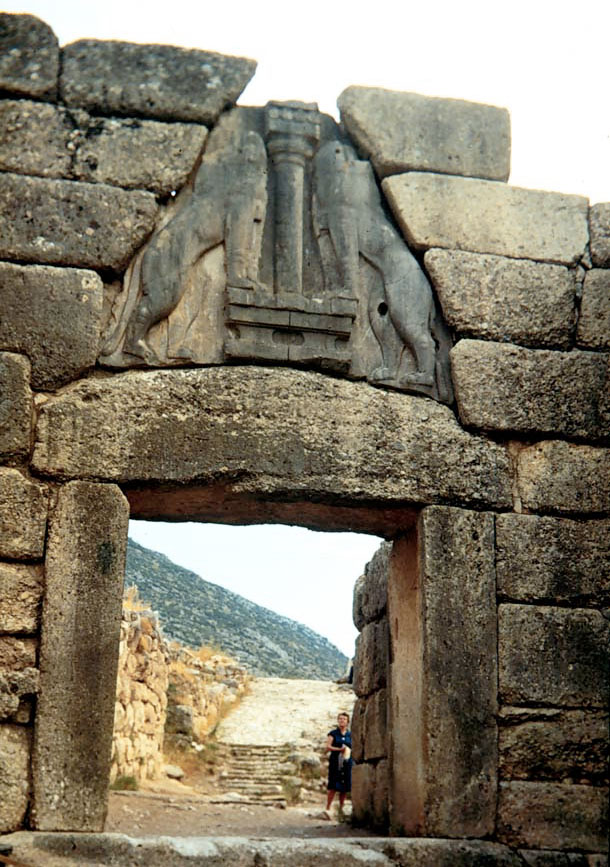Lion Gate at Mycenae
c. 1250 BCE

The Lion Gate consists of four megalithic blocks of stone arranged around an open space. At the base is a threshold to the sides of which stand two upright stones or jambs. Across the top of the jambs is an enormous lintel believed to weigh around twenty tons.
On top the lintel sits a triangular block of stone some 27.5 inches thick which has been carved in relief, on the outward-facing surface, two rampant lions (lionesses) with their forepaws standing on an altar upon which is mounted a tapering Minoan-style column. The lionesses may originally have had bronze heads (now missing)

The Lion Gate, Mycenae
The triangular section over the lintel is formed using a system of construction called corbeling. The stones are arranged in a series of layers, or courses, so that each level projects over the one below it. When the stones meet at the top, they are in place by a keystone to create an arch. The empty triangular space is called a relieving triangle because it lightens the weight of stone resting on the lintel. In the case of the Lion Gate, the relieving triangle has been filled with a relief sculpture.
The gate itself and the walls to either side (which are almost 20 feet thick) are constructed of dressed stone layed in regular courses. This is called ashlar masonry. The massive stones out of which the Lion Gate and the walls of Mycenae have been constructed are sometimes also called Cyclopean. The Cyclops were a mythical race of Giants. The later Greeks believed that only the Cyclops would have been strong enough to lift the blocks of stone found at Mycenaean sites.
The Cyclopes are described by Homer in the Odyssey as having a single round eye in the center of their foreheads (the name derives from the Greek kuklos meaning "circle" and ops meaning "eye"). In Book IX of the Odyssey, Odysseus escapes from the Cyclops Polyphemus by putting out his single eye with a stake and tying himself and his men to the undersides of a flock of sheep.

 SPRING 2016
SPRING 2016  SCHEDULE
SCHEDULE  REQUIREMENTS
REQUIREMENTS

 SPRING 2016
SPRING 2016  SCHEDULE
SCHEDULE  REQUIREMENTS
REQUIREMENTS